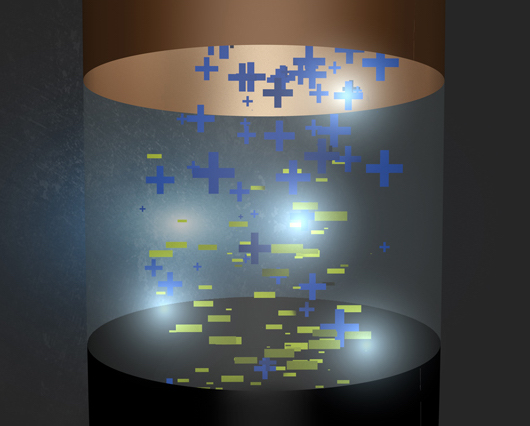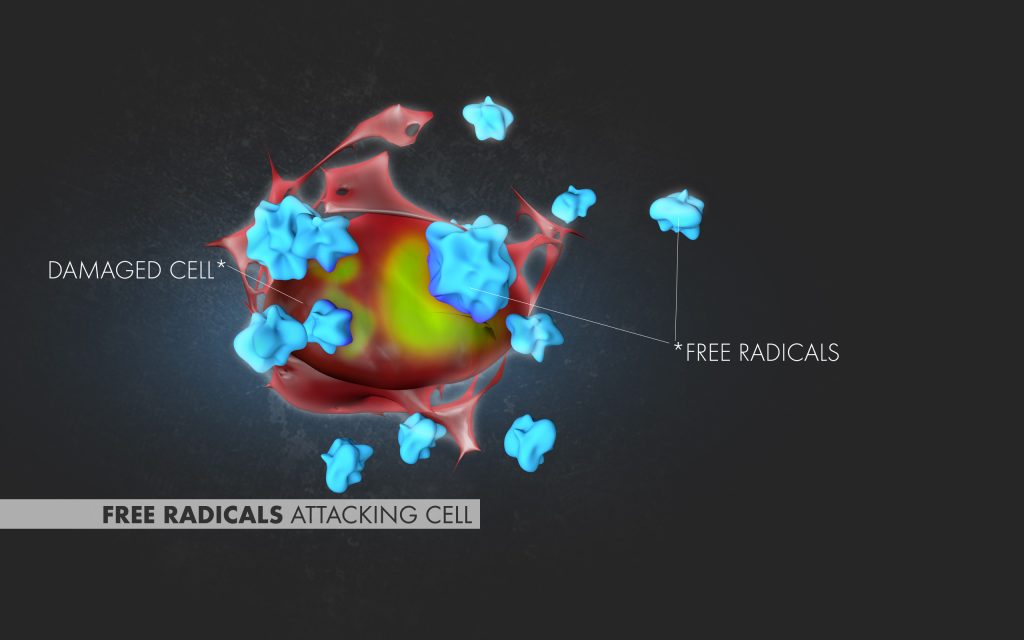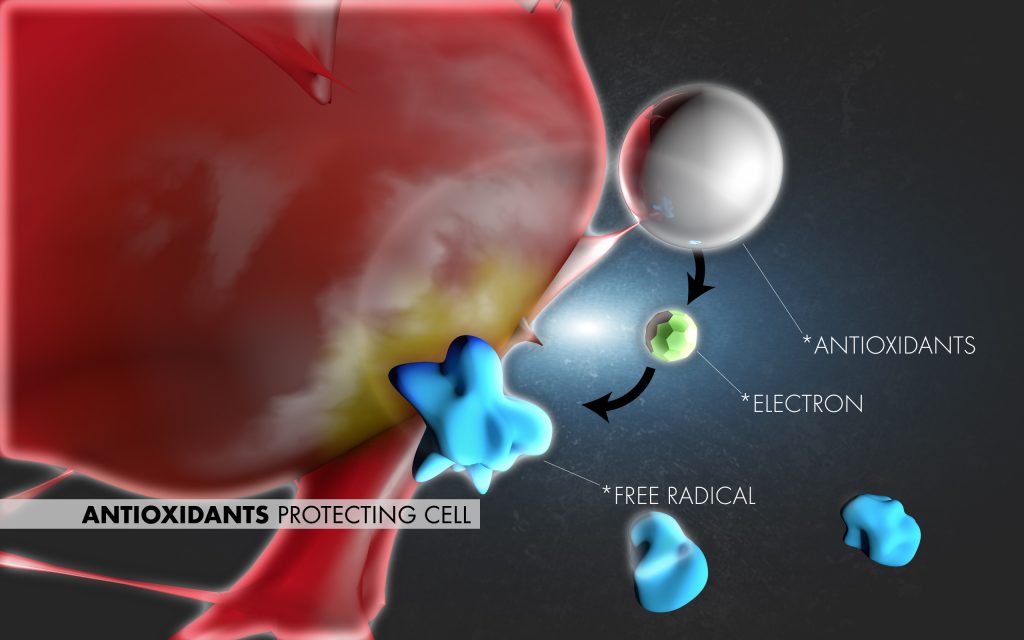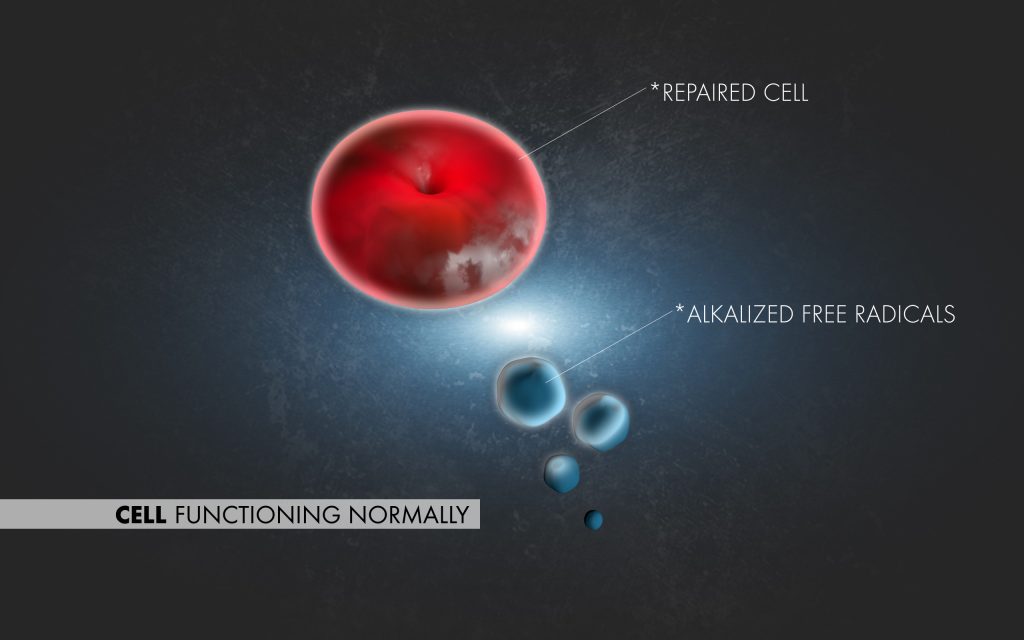Naked Electron Therapy: The Science Behind Heliopatch
Introduction
Naked Electron Therapy: Heliopatch utilizes patent-pending Human Half-Cell Technology, turning the human body into a cathode and providing the anode through the patch. Unlike other electrical products like TENS, tasers, or iontophoresis, which use the body as a resistor or wire, our patch operates through a unique mechanism.

https://www.coinandbullionpages.com/critical-metals/magnesium.html
Image 1 illustrates past technologies with a simple circuit featuring a load—a battery lighting a bulb. In an effective battery operation, a molecule serves as an electron donor or reducing agent. In this example, the black anode, depicted negatively due to its surplus of electrons, plays this role.
To facilitate electron flow, the anode must connect with the cathode in two ways—electrically through a conductor for electron transfer and ionically through an electrolyte for ion movement. In this depiction, the cathode is orange, and the anode is black. Ions traverse the electrolyte to maintain charge balance, while electrons travel down the conductor, completing redox reactions. Driven by voltage differences in the reactants, electrons in the anode move towards the cathode, following the path of least resistance—the wire.
Few electrons travel through the electrolyte, mainly allowing free movement of ions. As electrons traverse the wire, generating heat in the light bulb, they gradually lose voltage until reaching the cathode. Maintaining sufficient voltage is crucial for spontaneous reactions; excessive load resistance can impede electrochemical processes.
The cathode, an oxidizing agent, gains electrons, resulting in a more negative net charge. To preserve balance between the battery halves, ions shuttle between the anode and cathode, ensuring continuous electron flow. The cathode releases negative ions (anions) to the anode (red minus symbols), while the anode releases positive ions (cations) to the cathode (blue positive symbol). This ion exchange occurs through the electrolyte, allowing a continuous flow of electrons and charge balance.
Researchers have extensively studied these electrochemical principles, but limited application has been observed. Conceptual application of battery reactions to organism interactions with an anode, treating the organism as one-half of the battery, has not occurred. In our system, the diagram components align with the illustration above, but the person replaces the cathode (orange). There is no need for electrically resistive electrolytes; both electrons and ions can travel along the same path.
How Heliopatch Works

Image 2
The human body experiences oxidative stress at the cellular level due to the imperfect efficiency of normal cellular function. Mitochondria, acting as cell power plants, generate energy but also produce pollutants known as free radicals. These radicals strip electrons from surrounding structures, hindering normal cell function. Antioxidants, serving as reducing agents, donate electrons to free radicals, neutralizing their destructive nature. Ideally, the body can produce or absorb enough antioxidants from a nutritious diet to counteract free radical threats. However, in various circumstances, natural antioxidants may be depleted. Factors like poor diet and increased oxidative stress during high-intensity exercise or immune system attacks can contribute to antioxidant depletion.

Image 3
The leakage of free radicals induces oxidative stress, as these radicals initiate a chain reaction by stealing electrons from reducing molecules. This electron transfer continues, creating a cascade effect. Strenuous exercise intensifies mitochondrial leakage, as the body pushes its limits to generate more energy.
Antioxidants halt the chain reaction by freely donating an electron, eliminating the need for a molecular middleman. Human Half-Cell Technology, as employed by Heliopatch, delivers naked electrons directly to the body, surpassing the quantities achievable with molecular antioxidants. The unique feature of Heliopatch's naked electrons is their zero waste, transforming the neutralized free radical into a benign molecule like hydroxide (OH-) or water (H2O). These electrons alter the molecular structure of a hydroxyl (OH) free radical, converting it into hydroxide (OH-) and creating an alkaline environment in the target area. This alkalinity is beneficial during times of stress, such as lactic acid production during intense physical activity.
Other Sources of Free Radical Damage
Our body's immune system produces free radicals to combat invaders like bacteria or viruses. While this defense mechanism typically functions well, there are instances of misidentification, leading to the immune system attacking its own cells, known as autoimmunity. Autoimmunity can result in conditions such as arthritis, psoriasis, dermatitis, and other harmful effects.
Heliopatch should only be used on healthy individuals without fever or signs of infection. It is crucial to identify the cause of pain and ensure it is not related to an infection, where the immune system's response is productive. Conditions like sunburn are caused by ionizing radiation from the sun, leading to oxidation in the skin cells. Environmental sources of radiation damage, such as inhaled radon or ingested polonium, can also contribute to cellular damage.

Image 4
Dietary Antioxidants
Our diets are expected to provide sufficient antioxidants, but food processing and storage have systematically depleted these from most people. Simultaneously, the oxidative load of free radicals from external sources, such as pollution, has significantly increased our oxidative burden. Antioxidants from external sources aid in the production of internally usable cofactor antioxidants, like glutathione. Dietary antioxidants obtained from foods like blueberries are mostly depleted in the gastrointestinal tract. The majority is taken up by the liver, with the remainder distributed throughout the body. As dietary antioxidants must pass through the digestive tract, their impact on inflammation in a specific body part is limited, regardless of the quantity consumed.
Dietary antioxidants have a distinct drawback – they must be consumed, requiring either costly supplements or large amounts of unfamiliar, unpalatable food. High antioxidant superfoods are often expensive and contribute to increased caloric intake. Burning those calories by mitochondria results in more free radicals. Balancing oxidative stress, dietary antioxidant intake, and caloric intake poses challenges in managing free radicals through diet. Consuming sufficient antioxidants during physical activities might lead to stomach issues, counteracting potential supplementation benefits. Molecular antioxidants, after donating their electrons, become waste products needing elimination by the body. A significant advantage of Human Half-Cell Technology is that our naked electrons are fully consumed by oxidizing molecules, leaving zero waste.

Image 5
Inflammation
Inflammation results from the body's response to unwanted stimuli, such as pathogens or damaged cells. The immune system attacks a specific area of the body, whether rightly or wrongly. Inflammation, recognized by the pain it causes, can be alleviated with over-the-counter pain relievers like Tylenol, indicating inflammation as the cause. Steroids resolving pain suggest inflammation triggered by an immune response. Autoimmune diseases occur when the immune system attacks the body's own cells, including rheumatoid arthritis, psoriasis, Crohn's disease, lupus, Hashimoto's, and others. Current autoimmune disorder treatments often involve suppressing the body's overall immune function, rendering sufferers more susceptible to infections. Human Half-Cell Technology has its strongest effect in the immediate application area and is reversible by simply removing it from the skin. In contrast, cortisone injections have a prolonged effect with no opportunity for reversal in case of infection. This applies similarly to pain relief and management. Treating the entire body and mind with large quantities of a drug may be unnecessary when the pain is localized.
Certain circumstances, like head trauma (concussions), can trigger a cascade of inflammation and oxidative stress events. Research has demonstrated that the antioxidant glutathione can significantly reduce brain damage in concussed mice. Applying glutathione three hours after injury reduced cell death by 51 percent. Glutathione operates by decreasing levels of reactive oxygen species (ROS) molecules that harm cells. The study observed high ROS levels at the trauma site immediately after the brain injury. The substantial ROS surge initiated a sequence of events leading to brain cell death, but glutathione was able to prevent many of these effects. However, administering this chemical to humans is challenging.
With Human Half-Cell Technology, this should not be a problem for the much smaller electron. Unlike an injection, electrons can easily penetrate the human skull and blood brain barrier.

Image 6
Versatile Pain Relief
In addition to significantly and quickly reducing general pain, Human Half- Cell technology has also helped speed healing from a variety of ill effects. The effects range from immediately stopping itchy hives, to relieving pain and cramps associated with PMS. Further, we have witnessed support of natural wound healing process, similar to how low intensity direct current has been shown to accelerate wound healing.
Now for the How
We recognize that the human body responds positively to naked electrons, and these electrons have a reducing effect on cells. The next question is: how can we efficiently donate these naked electrons to the body and establish a voltaic cell?
Reactive Elements
Certain elements act as electron donors, notably those in the leftmost columns of the periodic table, such as alkali metals and alkali earth metals (e.g., sodium, potassium, calcium, and magnesium). Alkali metals donate one electron, while alkali earth metals donate two electrons. However, challenges arise in extracting and delivering these electrons efficiently and safely. Group 1 elements like sodium and potassium are too reactive, posing hazards like hydrogen generation and heat production upon contact with water, ruling them out. Group 2 elements, such as calcium and magnesium, offer better options due to their higher energy density. Despite being less reactive, passivation—resulting from an insoluble salt or hydroxide coating—hampers continuous electron extraction. Abrasion or incorporating acidity in the electrolyte helps overcome passivation. The selected element must not only be safe but also provide nutrition if consumed by humans. Additionally, considering the element's position in the standard reducing potentials table ensures the highest voltage and optimal electron penetration into the body.
Standard Reducing Potentials
This table shows the voltage an element or compound is capable of providing when it gives up electrons to a cathode. You can see magnesium is one of the most charged elements; right above it is lithium which is used in high performance batteries for phones and vehicles.
| Reagents | Products | Voltage (V) |
|---|---|---|
| Li⁺ + e⁻ | Li(s) | -3.0401 |
| Mg²⁺ + 2e⁻ | Mg(s) | -2.372 |
| H₂PO₂⁻ + e⁻ | P + 2OH⁻ | -1.82 |
| TiO₂⁺ + 2H⁺ + 4e⁻ | Ti(s) + H₂O | -0.86 |
| 2H₂O + 2e⁻ | H₂(g) + 2OH⁻ | -0.8277 |
| Fe²⁺ + 2e⁻ | Fe(s) | -0.44 |
| O₂(g) + H⁺ + e⁻ | HO₂(aq) | -0.13 |
| Human | – | -0.1 |
| 2H⁺ + 2e⁻ | H₂(g) | 0 |
| Human | – | +0.1 |
| C(s) + 4H⁺ + 4e⁻ | CH₄(g) | +0.13 |
| Cu²⁺ + e⁻ | Cu⁺ | +0.159 |
| Cu²⁺ + 2e⁻ | Cu(s) | +0.340 |
| Ag⁺ + e⁻ | Ag(s) | +0.7996 |
| Pt²⁺ + 2e⁻ | Pt(s) | +1.188 |
| O₂(g) + 4H⁺ + 4e⁻ | 2H₂O | +1.229 |
| Cl₂(g) + 2e⁻ | 2Cl⁻ | +1.36 |
| H₂O₂(aq) + 2H⁺ + 2e⁻ | 2H₂O | +1.78 |
| O₃(g) + 2H⁺ + 2e⁻ | O₂(g) + H₂O | +2.075 |
| F₂(g) + 2H⁺ + 2e⁻ | 2HF(aq) | +3.05 |
The Benefits of Magnesium
Magnesium fulfills all our requirements - it is stable, energy-dense, and nutritious for humans. Typically obtained from leafy green vegetables, magnesium is often deficient in many people's diets.
Administering magnesium transdermally, Heliopatch can address this widespread nutritional gap. Magnesium shows a positive association with skeletal muscle power and is used therapeutically for women experiencing PMS and painful menstrual cramps. It's important to note that dietary magnesium is already oxidized, having given up its two electrons to become the ion Mg2+. Elemental magnesium differs as it retains its electrons for donation, transforming into the ion Mg2+ after the donation.

https://www.coinandbullionpages.com/critical-metals/magnesium.html
Unlocking Magnesium’s Potential
Magnesium develops an oxide coating when exposed to air, removable by abrasion or a highly soluble acid. However, upon exposing the fresh metallic surface, it quickly oxidizes again due to atmospheric oxygen. To address this, our all-natural trade secret compound is applied to the raw magnesium, facilitating a continuous flow of electrons. In contrast, pure unoxidized magnesium, when in contact with bare skin, would rapidly impair electron flow due to the corrosion layer, leading to a swift decline in voltage.
Choosing the Electrolyte
Now that we have an electron donor (Mg) and a path for the electrons, we need an effective way for ions to transfer – we need an electrolyte. To recap, here are the three essential components for forming a Human Half-Cell:
Anode = Magnesium
Cathode = Reactive oxygen species (free radicals) in the body.
Electrolyte = Salty solution to facilitate ion flow between the anode and cathode, maintaining charge neutrality.
The smooth flow of ions represents the second significant challenge in creating a functional half-cell within a human. An electrolyte is crucial as the positive ions it releases will enter the body to offset the negative charge of electrons, maintaining the person's charge neutrality and allowing more electrons to enter.
Our Electrolyte Blend and the Potential of Electrolytes
The electrolyte formulation offers another opportunity to deliver our selected ions to the user. Our standard electrolyte solution comprises an isotonic mix of sodium chloride, potassium chloride, water, and glycerin. Sodium chloride and potassium chloride serve as the electrolytes within the water, while glycerin helps maintain skin hydration and lubrication.
We have also experimented with a blend of magnesium, calcium, strontium, and glucosamine/chondroitin to provide nutrients to bones and ligaments. By testing different combinations of positively charged molecules, we can offer various nutritional benefits to users. This system ensures ions are directly delivered to the specific site where nutrient activity is desired, avoiding dilution throughout the entire system. Additionally, this approach prevents nutrients from reaching parts of the body where undesired effects may occur, such as the laxative effects of orally consumed magnesium.
Important to note is that this method and technology operate differently from iontophoresis. Firstly, we utilize the person as one half of the electrochemical cell, not merely as a conduit for ions and electrons like in iontophoresis. Secondly, by creating a reducing environment with an abundance of free electrons to prevent oxidation, we can deliver positively charged molecules and ions that are oxidatively delicate. This ensures their integrity and consistency, in contrast to the oxidative effects induced by iontophoresis under the positive electrode.
Heliopatch
With all elements of the voltaic cell accounted for, we need a way to easily and inexpensively apply Human Half-Cell Technology to the human body. After a few years of research and development, we developed Heliopatch. Heliopatch is a transdermal, water-resistant patch that contains the magnesium anode and electrolyte solution. Heliopatch can be directly applied to areas of discomfort to deliver naked electron therapy.
Improving Ion Flow
The outermost layer of skin is dead and nonconductive, which impedes ion transfer from the Heliopatch. We have tried using an abrasive alcohol pad but this had little impact on its own. However when we apply a saline/glycerin solution to the skin it hydrates and after several minutes allows a much greater rate of ion transfer to happen. This lets even more electrons enter the user. The combination of Heliopatch and the Activator solution as a mixed conductor leads to hours of relief.
Human Half-Cell in the Future
Oxidation of cells is both good and bad. It can be beneficial, as it can eliminate malfunctioning cells before they cause problems. Uncontrolled oxidation is bad because it is a major factor in aging. We believe with our controlled delivery of pure antioxidants we can benefit cell growth and health - particularly as we develop other technologies and therapies to form an overall method of treatment. We believe that our approach can be a cornerstone in future life extension therapies to help people live well beyond the current expectancy. Our goal is to have a fully functioning life extension pod for use by the year 2020, using our technologies with others, to form a full, comprehensive treatment.

